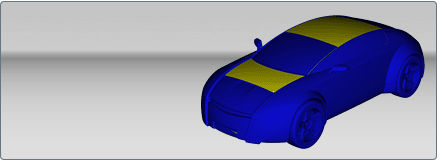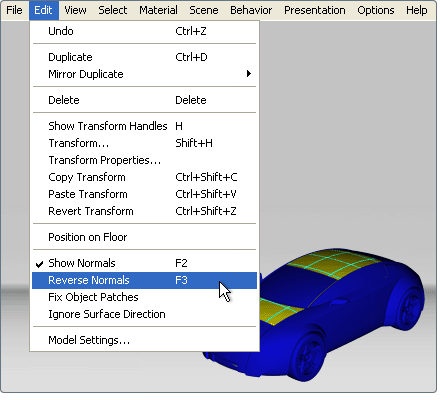What are surface normals?
Surface normals indicate the orientation of the polygonal faces making up that surface. Applied materials look best when the normals are facing towards the viewer, so it is sometimes necessary to reverse surface normals. Otherwise, unpredictable results may occur when you apply materials to surfaces, or materials may appear patch-like across adjacent surfaces.
For most imported models, the normals should already be correctly positioned. However, before you start applying materials it is a good idea to use the Show Normals tool to check that all the surface normals face outward and to correct any that need correcting.
Check normals and correct any facing inward

The model changes its shading to show its normals.

The outward-facing side of each surface should be blue, and the inward-facing side should be yellow.

The selected surface changes to blue, indicating its normals now point the correct way.

If some patches in the object have reversed normals, you can use the Fix Object Patches tool.
To toggle off the normals so you can resume editing your scene, select Edit > Show Normals (or press F2) again.

Face normals to camera to improve patchy appearance
You can choose to override irregular normals so they won’t affect the lighting of materials. This may prevent a patchy appearance for car paints and other materials, especially if you are creating quick design reviews where ambient shadows don’t need to be calculated and transparent surfaces won’t be ray traced.

The selected surfaces change to orange (to indicate their normals are being overridden to face the camera).
